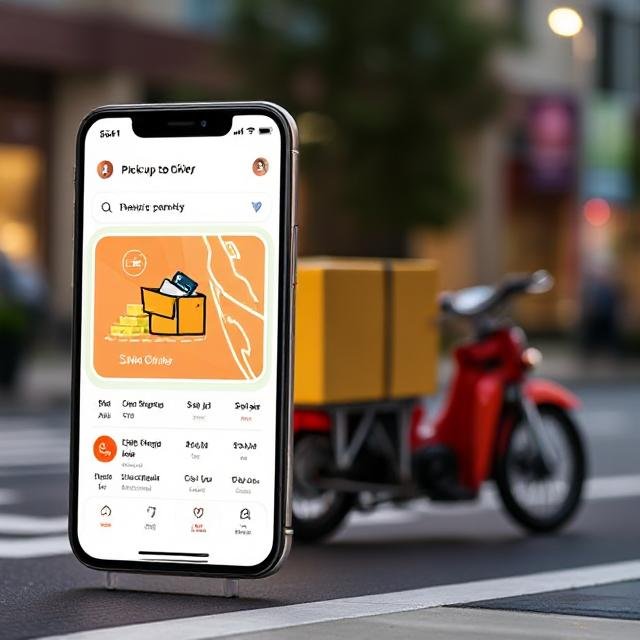The on-demand delivery market keeps growing as consumers demand fast and convenient access to products and services. Building a successful on-demand delivery app requires a well-planned approach, careful execution, and a strong focus on user experience. This blog walks you through the key steps and considerations to create an app that stands out and attracts loyal users.
Why On-Demand Delivery Apps Matter
On-demand delivery apps offer instant access to goods or services, such as food, groceries, or packages, making life easier for customers. Businesses that use these apps can reach more customers, increase sales, and build stronger relationships with their audience. A well-built delivery app can give you a competitive edge in this dynamic market.
These are Key Steps to Build a Successful On-Demand Delivery App
Creating an effective pickup and delivery app solution involves several important stages—from choosing your business model to launching and improving the app based on user feedback. Following these steps ensures your app meets market needs and operates smoothly.
Step 1: Define Your Business Model
Before developing the app, decide what type of delivery service you want to offer. Popular models include:
- Single vendor: A dedicated store or restaurant offers delivery through your app.
- Multi-vendor marketplace: Multiple stores or restaurants list their products for delivery.
- Courier service: Users request delivery of any item by independent drivers.
Choose the model that fits your target audience and resources. Your business model will influence the app’s features, technology, and marketing approach.
Step 2: Research Your Target Audience
Identify who will use your app and what they expect. Consider their age, location, preferences, and buying habits. This research helps you design an app that matches their needs and preferences. You can conduct surveys, interviews, or analyze competitor apps to gather insights.
Step 3: Plan Core Features
A successful on-demand delivery app must include the following essential features:
User Registration and Profiles
Allow users to create accounts via email, phone number, or social media. Profiles should store delivery addresses, payment methods, and order history for quick access.
Product or Service Listings
Display products or services with clear images, descriptions, prices, and availability. Enable filters and search options to help users find what they want easily.
Real-Time Order Tracking
Show live updates on order status, including preparation, pickup, and delivery stages. This feature builds trust and keeps users informed.
Payment Integration
Support multiple payment methods such as credit/debit cards, digital wallets, and cash on delivery. Ensure secure and smooth transactions.
Push Notifications
Send timely alerts for order confirmations, delivery status, discounts, and promotions to keep users engaged.
Ratings and Reviews
Allow users to rate their experience and provide feedback. This improves service quality and builds credibility.
Customer Support
Integrate chat, call, or email support to resolve user issues promptly.
Step 4: Design a User-Friendly Interface
A clean and intuitive interface keeps users engaged and reduces drop-offs. Prioritize easy navigation, fast loading times, and clear call-to-action buttons. Use appealing colors and fonts that align with your brand identity.
Consider designing separate interfaces for customers, delivery drivers, and vendors. Each group needs tailored features and workflows for smooth operation.
Step 5: Choose the Right Technology Stack
Select technologies that ensure performance, scalability, and security. Popular options include:
- Frontend: React Native, Flutter for cross-platform mobile apps.
- Backend: Node.js, Python Django for server-side logic.
- Database: MongoDB, PostgreSQL for managing data.
- Cloud services: AWS, Google Cloud for hosting and storage.
- Maps and GPS: Google Maps API for location tracking.
Partner with skilled developers who understand these technologies and can implement your vision efficiently.
Step 6: Develop and Test the App
Break development into phases:
- Prototype: Create wireframes and mockups to visualize the app.
- MVP (Minimum Viable Product): Build a version with core features to launch quickly.
- Testing: Perform functional, usability, and performance tests. Fix bugs and optimize speed.
Testing on multiple devices and operating systems helps ensure smooth user experiences.
Step 7: Launch and Market the App
Prepare a launch plan that targets your audience through social media, email marketing, influencers, and paid ads. Highlight your app’s unique benefits and special offers to attract early users.
Encourage users to share the app and leave reviews to increase visibility. Consistent marketing efforts help maintain growth and retain customers.
Step 8: Monitor Performance and Improve
Use analytics tools to track user behavior, order volumes, and app performance. Monitor feedback to identify pain points and new feature requests.
Regular updates keep your app fresh and competitive. Add enhancements that meet user needs and fix any issues promptly.
Tips for Long-Term Success
- Build partnerships with reliable vendors and delivery personnel.
- Maintain high service quality to build trust.
- Offer promotions and loyalty programs to keep users coming back.
- Stay ahead of trends by adopting new technologies and features.
- Ensure security and privacy to protect user data.
Conclusion
Creating a successful on-demand delivery app requires a clear business plan, customer-centric design, reliable technology, and continuous improvement. By focusing on user needs and operational efficiency, you can develop an app that delivers value to customers and drives business growth.
